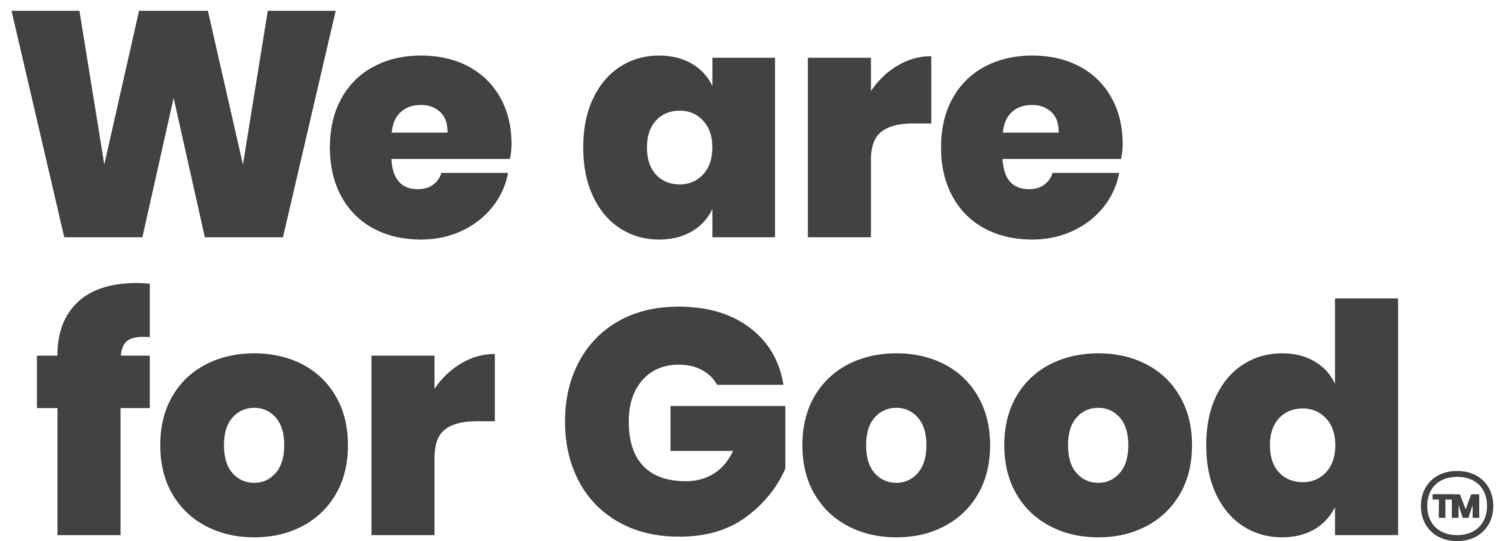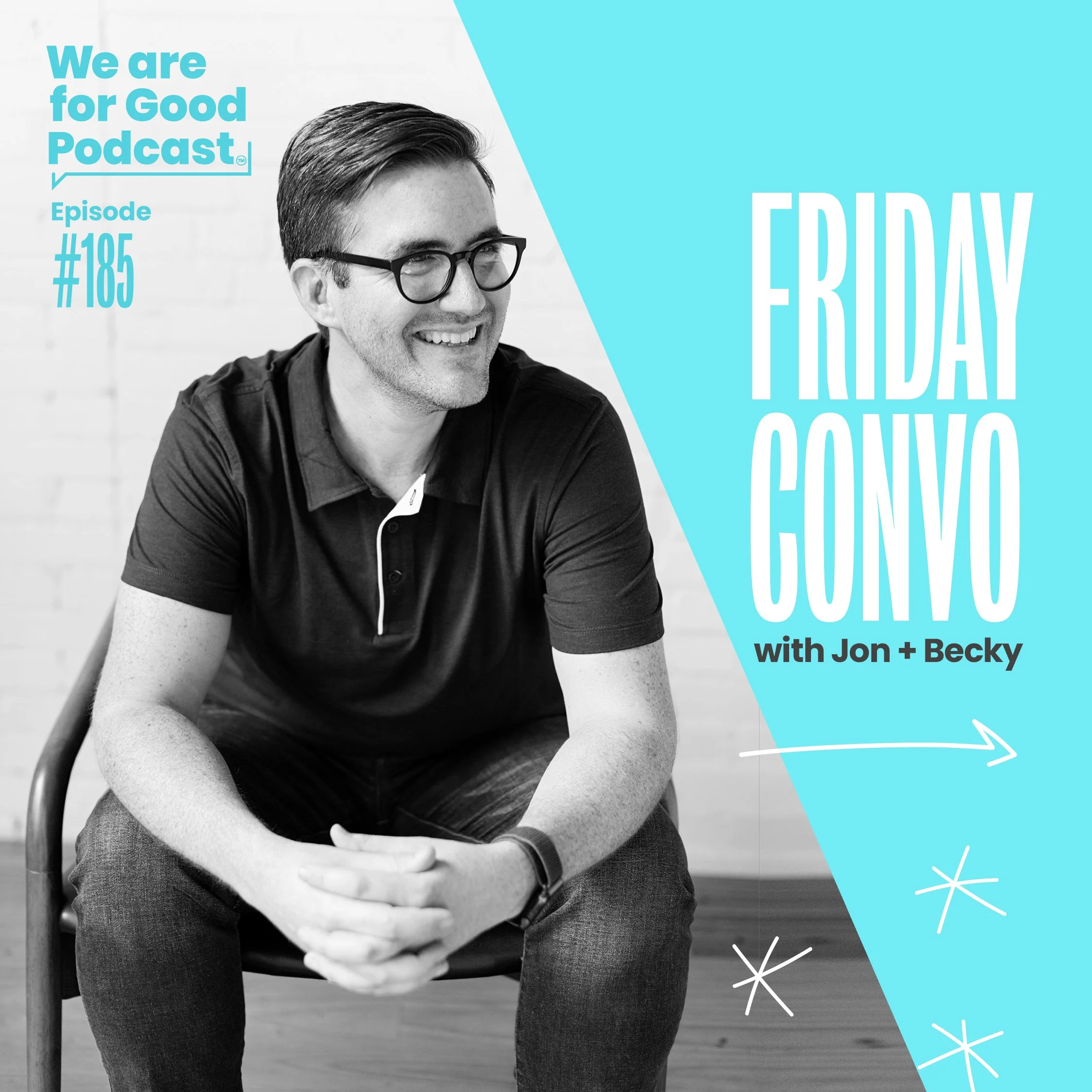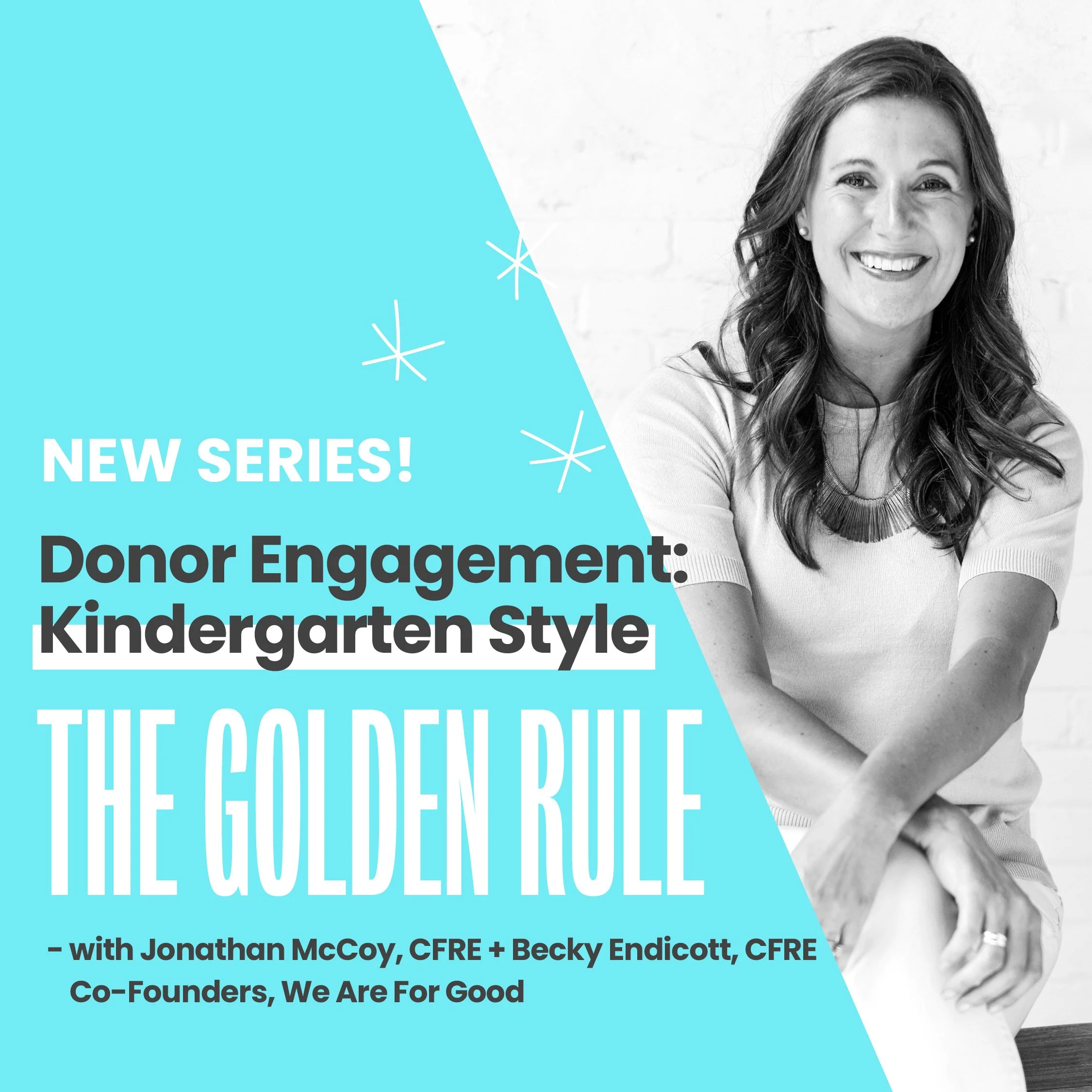185. Donor Engagement Kindergarten Style: The Golden Rule - Jonathan McCoy and CFRE, Becky Endicott, CFRE
Listen to this episode
Overview
Are you aware that everything you ever wanted to know about NEXT LEVEL donor engagement is found in those time-honored lessons learned in kindergarten? We're launching a new Friday series, Kindergarten Principles Build Thriving Nonprofit Cultures. This week we dive into what we can learn from The Golden Rule. We're bringing principles, case study examples, and Pro Tips of how to infuse this in your culture to each discussion, so you know who's implementing this well and who's harnessing innovation to connect with their donors and communities. Join us, and we'll kick it old school🤓 We'll bring the graham crackers!
“We love valuing that every single person matters. You matter. What you are doing to pour into your mission matters. Start thinking about how you want people to treat you, and turn that gift of reciprocity back to them.””
Episode Transcript
Download Full Episode Transcript
Episode Overview
The principle of The Golden Rule: treat others how you want to be treated (3:00)
Applying this principle (5:45)
Case studies of who is doing this well in the sector: She’s the First and Cornell University (12:00)
Pro tips for implementing this today (16:00)
Powerful quotes
“The best development officers we ever knew were relatable and had the kindergarten style of seeing people.” -Jon
“This company started when my youngest was in Kindergarten. I started seeing the alignment with some of the Kindergarten values.” -Becky
“We think it’s so transferable to your team. The principles we want to share through this series are something anyone can relate to.” -Jon
“This is the core ethos. If you get this right you can see major transformation.” -Jon
“If you’re not valuing everybody at every part of the equation, you’re missing opportunity for cultivation.” -Jon
“In development shops, you start to notice that your top donors and volunteers get treated very very well. We stopped and thought about it. If everyone matters, every person in our community should feel like the top 1%.” -Becky
“You have to start with authenticity. People are going to start to notice if you are just saying they are important, or if you’re showing them.” -Jon
“Ask yourself, is our program truly inclusive?” -Becky
“In today’s world, somebody with no actual money in the bank could have the most social capital on the web. This could be an incredible force that can create impact.” -Jon
“Look at people beyond the dollar figure.” -Jon
“Believers will not let your mission fail. They will rise when you need them.” -Becky
“Are you honoring the person’s story that you are sharing?” -Becky
“We are shepherding people through an entire journey. Imagine only communicating with someone in your life when it’s really intense and deep. Infuse levity, joy, and humanity into the way you communicate.” -Jon
“See every single person. Respond to them and you will begin to cultivate an online relationship with them.” -Becky
“You want to be in a place where you can engage and build community.” -Jon
“Human connection is incredibly memorable.” -Jon
“We love valuing that every single person matters. You matter. What you are doing to pour into your mission matters. Start thinking about how you want people to treat you, and turn that gift of reciprocity back to them.” -Becky
Principle: The Golden Rule... Applied. Ask yourself these questions 👇
Authenticity matters.
Is your program truly inclusive?
Are you looking at donor indicators beyond their last giving amount?
Are you meeting donors in their spaces?
Treating employee donors like donors?
Are you storytelling ethically?
The Golden Rule - Pro Tips
Data is important - and automations is important
Diversity, Equity, Inclusion is ESSENTIAL to a growth mindset and organizational vibrancy. Look around at your board, your staff, your volunteers. Are you representing the population you're serving? We need to create spaces and communities that lean toward inclusion, compassion and equality.
Focus on how you communicate - the tone can show you see people are at different points of their journey, connection with your mission, etc.
Ask yourself: How can you look at your base differently?
From a social media standpoint, you should reply to every single person
Use Tech to automate amazing stewardship - surprise your donors! (Check out our friends at ThankView!)
Are you asking humanizing questions?












